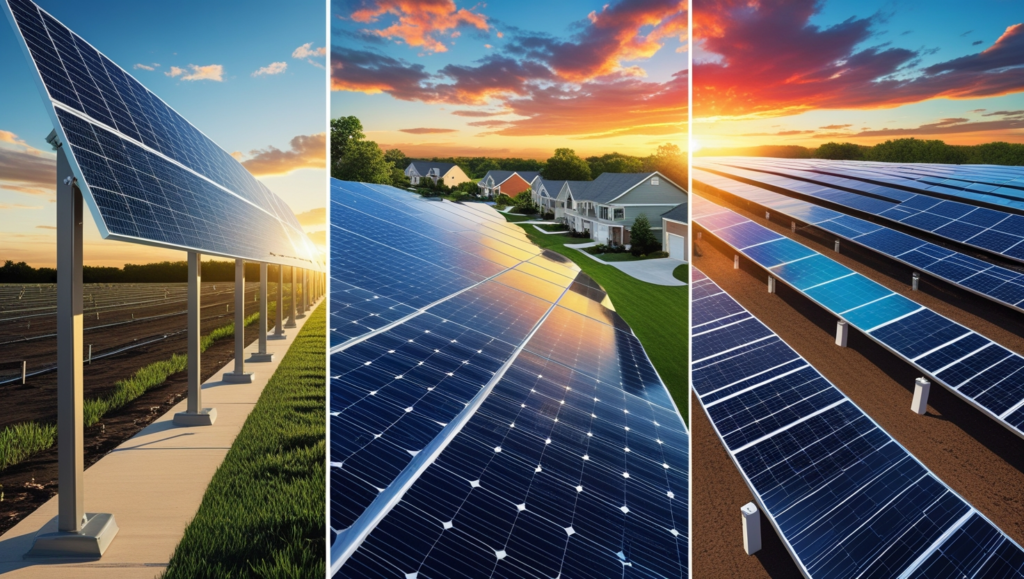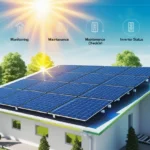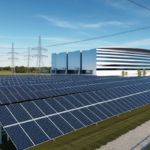Solar energy, now celebrated as a cornerstone of renewable power, was not always the widely recognized and accessible resource it is today. The idea of harnessing the sun’s energy has ancient roots, but its evolution into a mainstream power source in the United States reflects a fascinating journey of technological advancements, strategic policy changes, and a growing societal push for sustainability. From its early experimental applications to its role in modern energy systems, the rise of solar energy mirrors the nation’s increasing commitment to reducing carbon emissions and embracing renewable solutions. Exploring when and how solar energy gained popularity in the U.S. sheds light on its transformative impact, not only on the energy sector but also on how Americans perceive and interact with sustainable technologies.
Early Innovations: The Foundation of Solar Technology
The journey of solar energy in the United States began in the late 19th century, with pioneering efforts that set the stage for modern advancements. In 1883, Charles Fritts crafted the first functional solar cell using selenium. Although its efficiency was minimal compared to today’s standards, this invention was groundbreaking, demonstrating the potential of converting sunlight into electrical energy and laying the foundation for future developments in photovoltaic (PV) technology.
The mid-20th century marked a turning point in solar energy innovation. In 1954, researchers at Bell Labs unveiled the first silicon-based solar cell, a pivotal moment in the history of renewable energy. With an efficiency of 6%, this new design represented a significant leap forward, proving that solar power could be harnessed for practical use. The Bell Labs breakthrough not only showcased the feasibility of PV technology but also sparked interest in solar energy’s potential to revolutionize the way electricity was generated and consumed. This era of innovation planted the seeds for the widespread adoption of solar energy that would follow in the decades to come.

The 1970s: A Turning Point in Solar Awareness
The 1970s was a transformative decade for solar energy in the U.S., driven by both economic challenges and growing environmental awareness. The energy crisis of 1973, triggered by oil embargoes, exposed the nation’s heavy reliance on fossil fuels and underscored the urgency of finding alternative energy solutions. This pivotal moment catalyzed significant advancements and public interest in solar technology.
Federal Support
Recognizing the need for energy diversification, the U.S. government began investing heavily in renewable energy research. The Department of Energy (DOE), established in 1977, played a crucial role in advancing solar technology through funding and strategic initiatives. These efforts aimed to make solar power more efficient, affordable, and accessible to the public.
Tax Incentives
To accelerate adoption, policymakers introduced tax credits and financial incentives for homeowners and businesses installing solar energy systems. These measures reduced the financial barriers associated with solar technology, making it a more viable option for individuals and organizations.
Rising Public Interest
The environmental movement of the 1970s gained momentum, with increased awareness of pollution, climate change, and the finite nature of fossil fuel resources. Solar energy emerged as a beacon of sustainability, symbolizing a cleaner, greener future. Grassroots campaigns, educational programs, and media coverage further elevated its profile, encouraging widespread exploration of solar solutions.
The synergy of government initiatives, financial incentives, and public enthusiasm during the 1970s laid a robust foundation for the growth of solar energy in the U.S., setting the stage for its evolution into a mainstream energy source in the decades that followed.f economic and environmental factors during this period significantly boosted awareness and interest in solar technology.
1990s and Early 2000s: Technological Advancements and Market Growth
During the 1990s, solar energy experienced significant advancements that enhanced its affordability and accessibility. Innovations in manufacturing and efficiency played a pivotal role in reducing the cost of solar systems, paving the way for broader adoption by homeowners, businesses, and institutions.
Net Metering Policies
One of the most impactful developments during this period was the adoption of net metering laws across several states. These policies allowed solar energy users to sell excess electricity generated by their systems back to the grid, effectively lowering their energy bills. By turning homes and businesses into mini power plants, net metering provided a compelling financial incentive for installing solar panels and accelerated the transition to renewable energy.
Global Influence
The 1990s also saw a surge in solar energy advancements globally, particularly in Germany and Japan, where governments implemented progressive policies and subsidies to encourage solar adoption. These countries emerged as leaders in renewable energy, fostering a competitive international market. Innovations and cost reductions achieved abroad influenced the U.S. solar industry, pushing domestic manufacturers to improve panel efficiency and affordability.
Corporate Adoption
Businesses began to recognize the strategic advantages of solar energy during this decade. Many companies integrated solar power into their operations to align with sustainability goals, reduce energy costs, and enhance their environmental credentials. This marked a shift in how solar energy was perceived—not just as an eco-friendly choice but also as a practical investment for long-term financial and brand benefits.
The 1990s laid the groundwork for solar energy’s transition from niche technology to a mainstream energy solution. Through supportive policies, international collaboration, and corporate engagement, solar power continued its trajectory toward becoming a cornerstone of the U.S. energy landscape.

2010s: The Solar Boom
The 2010s marked a transformative era for solar energy in the United States, characterized by explosive growth and mainstream adoption. This decade solidified solar power’s position as a key player in the country’s energy mix, driven by a combination of economic, policy, and societal factors.
Plummeting Costs
The most striking development during this period was the dramatic drop in solar panel prices, which fell by over 70% between 2010 and 2020. This decline was fueled by advancements in manufacturing techniques, economies of scale, and increased global competition. Affordable pricing made solar installations more attainable for residential, commercial, and utility-scale projects, sparking widespread adoption across diverse sectors.
Government Incentives
Federal programs, particularly the Solar Investment Tax Credit (ITC), played a pivotal role in the solar boom. The ITC offered significant tax relief to individuals and businesses installing solar energy systems, reducing upfront costs and accelerating return on investment. This financial incentive was instrumental in making solar energy an appealing option for millions of Americans.
State-Level Policies
States such as California, Arizona, and Texas emerged as leaders in renewable energy, implementing ambitious targets to transition to cleaner power sources. Policies mandating renewable energy portfolio standards (RPS) and net metering further incentivized solar adoption. These measures not only boosted local installations but also created job opportunities and bolstered regional economies.
Public Awareness and Demand
The 2010s also saw a surge in public awareness regarding climate change and the urgent need for sustainable energy solutions. Consumers and businesses increasingly prioritized environmental responsibility, driving demand for cleaner energy alternatives. Solar power became a symbol of progress, appealing to eco-conscious individuals and organizations seeking to reduce their carbon footprint.
The End of the Decade
By the close of the 2010s, solar energy had transitioned from a niche market to a mainstream solution. Its affordability, reliability, and environmental benefits positioned it as a cornerstone of the renewable energy revolution. The decade’s achievements underscored the potential of solar power to reshape the U.S. energy landscape, setting the stage for even greater advancements in the years to come.ned from a niche technology to a mainstream power source, contributing significantly to the U.S. energy mix.

Present and Future: Solar Energy as a Dominant Power Source
Solar energy has cemented its position as one of the fastest-growing energy sources in the United States. By 2023, it accounted for over 4% of the nation’s electricity generation—a figure poised to increase significantly in the coming decades as advancements in technology and supportive policies continue to drive its expansion.
Residential Growth
Homeowners are increasingly turning to solar energy as a practical and sustainable solution. Declining installation costs, coupled with innovative financing options such as solar loans and leasing programs, have made solar panels more accessible than ever. From urban rooftops to suburban communities, residential solar systems are empowering individuals to take control of their energy needs while reducing utility bills and carbon footprints.
Utility-Scale Projects
Large-scale solar farms are reshaping the energy landscape, generating power for millions of Americans. These expansive installations demonstrate the scalability of solar energy, providing a reliable and cost-effective alternative to traditional fossil fuels. Utility companies are investing heavily in solar projects to meet renewable energy mandates and fulfill the growing demand for clean energy.
Technological Innovations
Emerging technologies are driving solar energy toward greater efficiency and reliability. Innovations like perovskite solar cells promise to revolutionize panel efficiency, while advancements in battery storage technology, such as lithium-ion and solid-state batteries, address the challenge of intermittent energy supply. These breakthroughs are paving the way for solar power to play an even more prominent role in a resilient and sustainable energy grid.
The Path Forward
Solar energy has come a long way since its inception, evolving from a niche technology to a cornerstone of the renewable energy revolution. As you weigh the benefits of adopting solar power, now is the perfect time to join the movement reshaping the future of energy. Whether you’re a homeowner seeking energy independence, a business owner looking to align with sustainability goals, or a policymaker aiming to meet environmental targets, solar energy offers a powerful solution.

Take the first step today—explore how solar power can meet your energy needs and contribute to a cleaner, greener planet. By adopting solar energy, you’re not just investing in your future; you’re playing an active role in building a sustainable legacy for generations to come.









